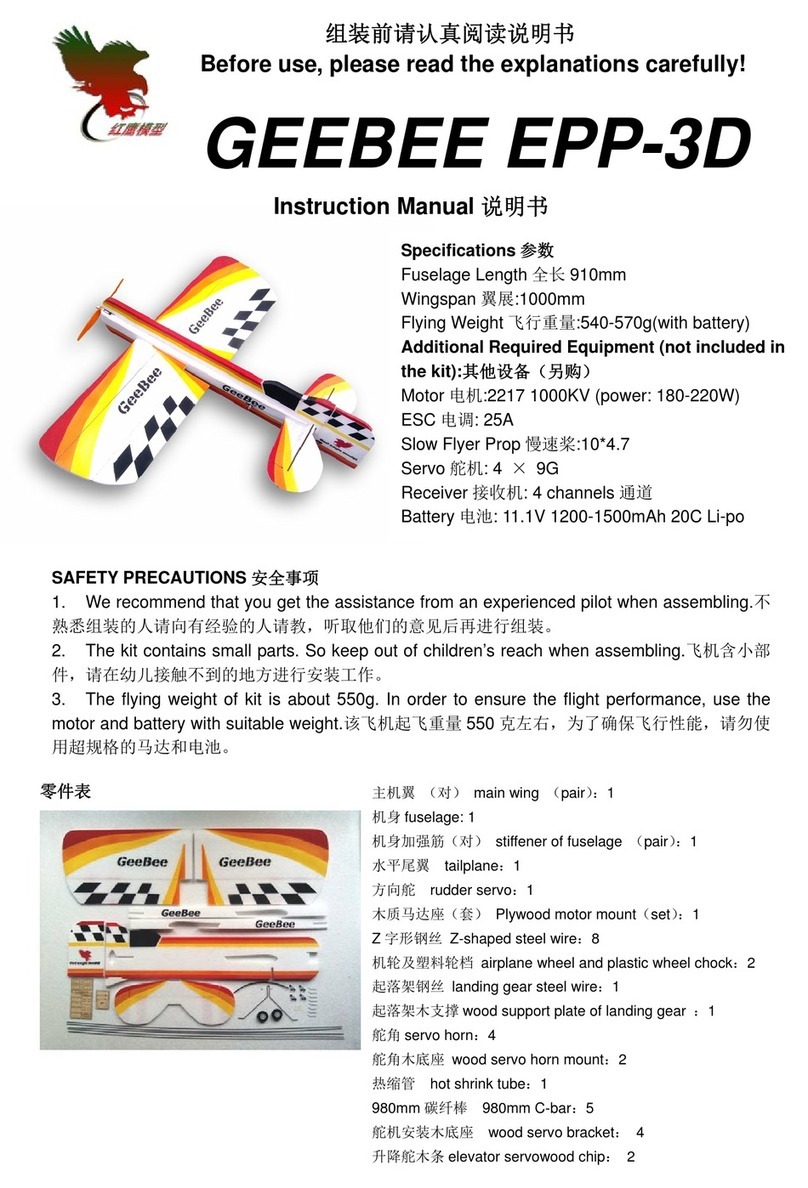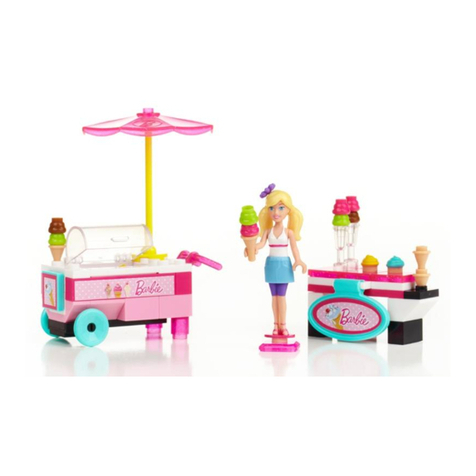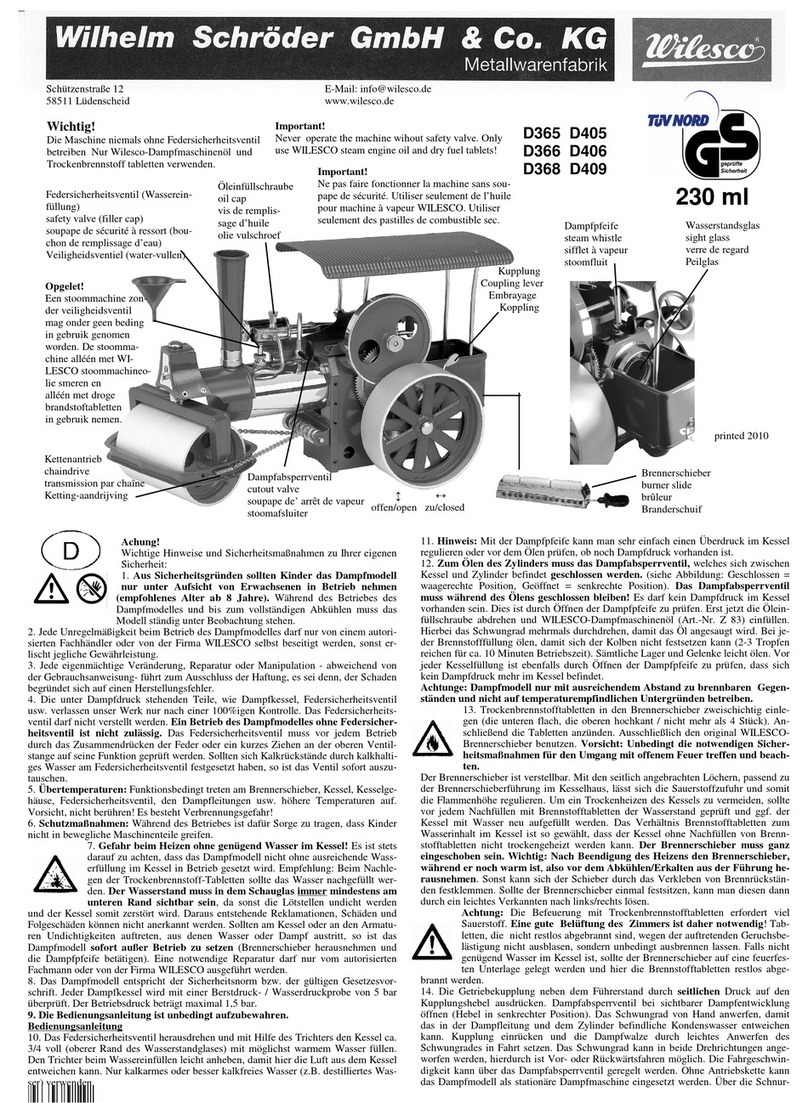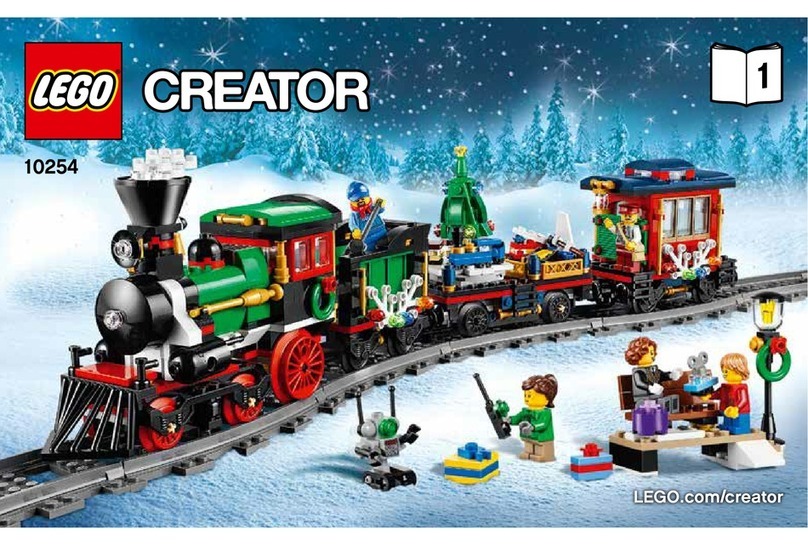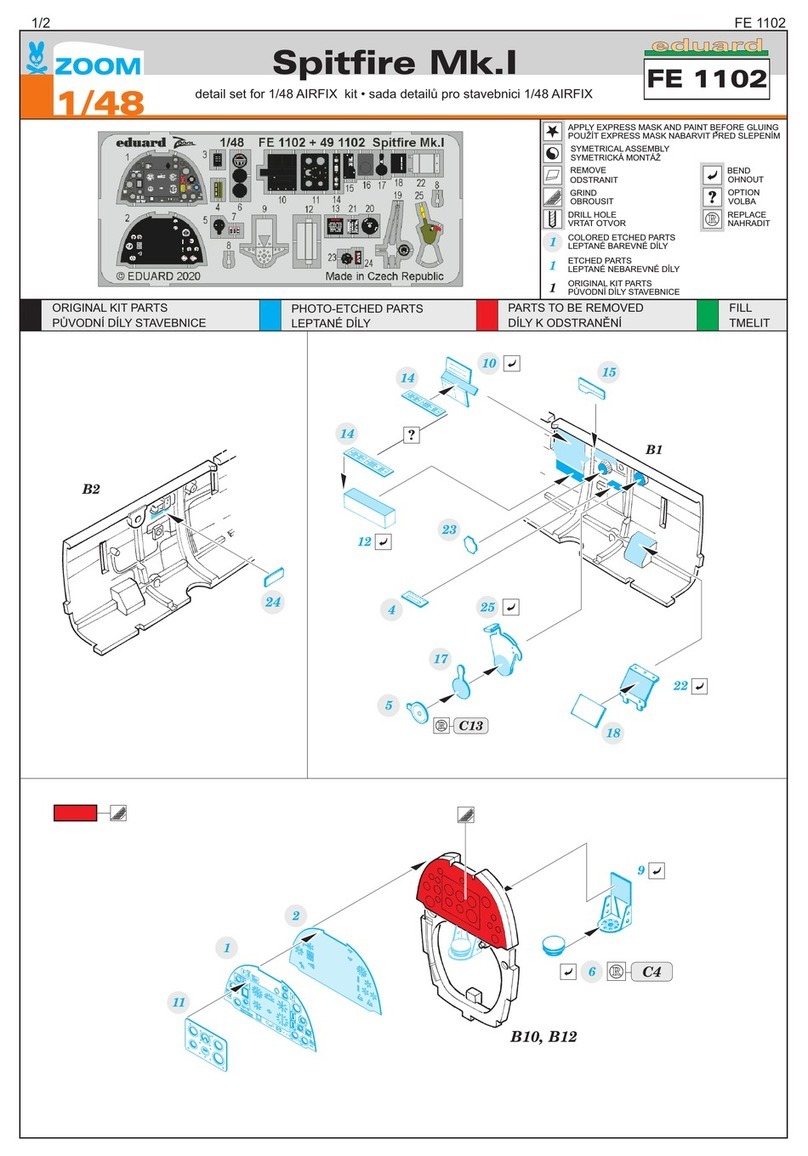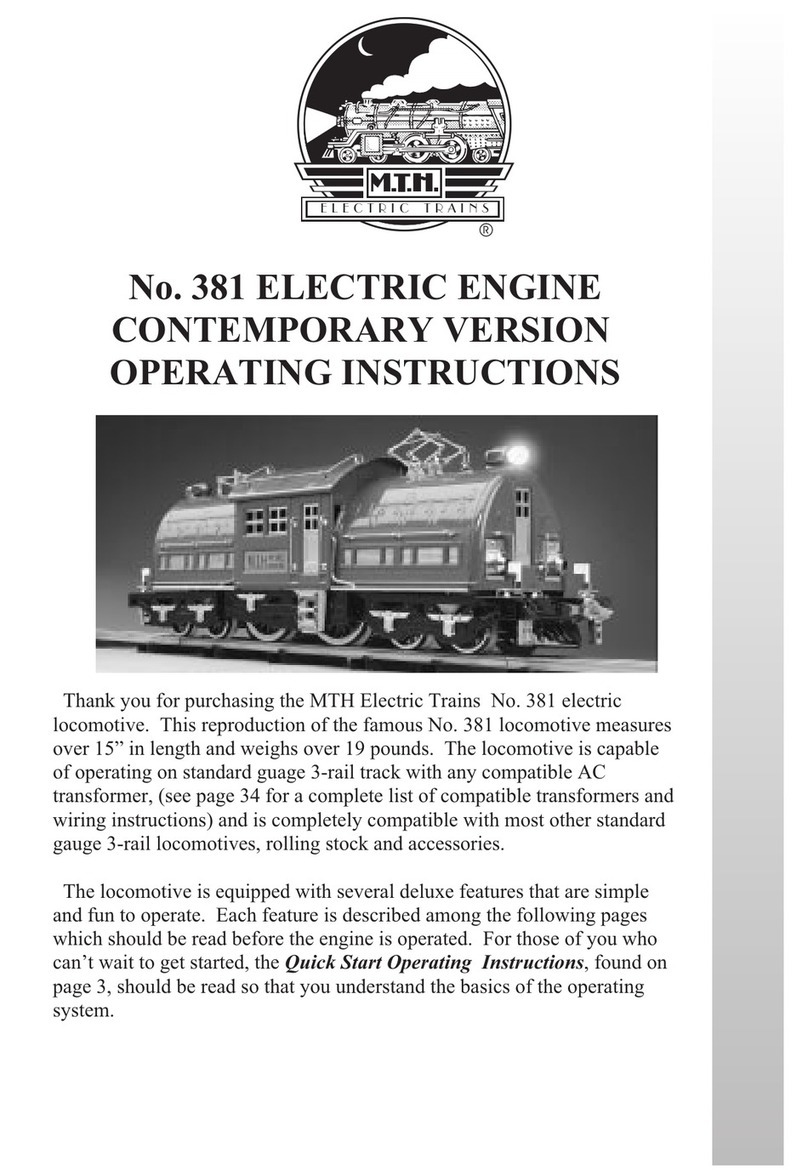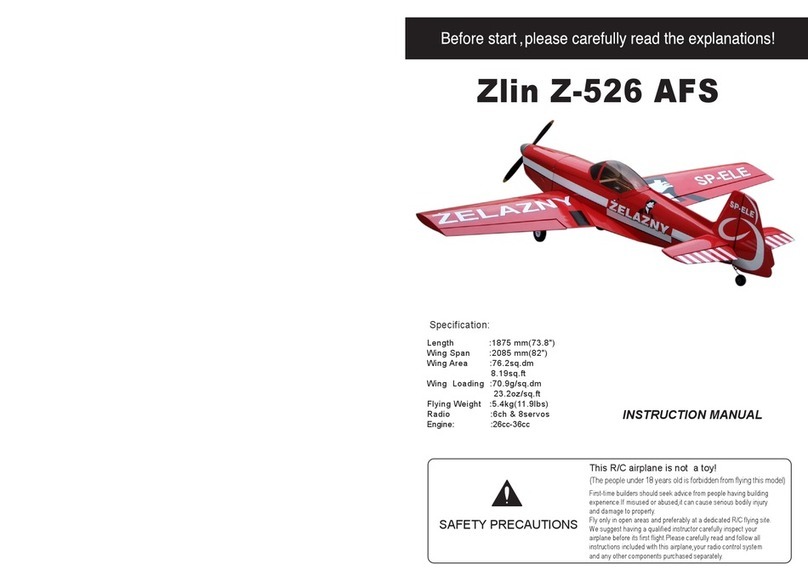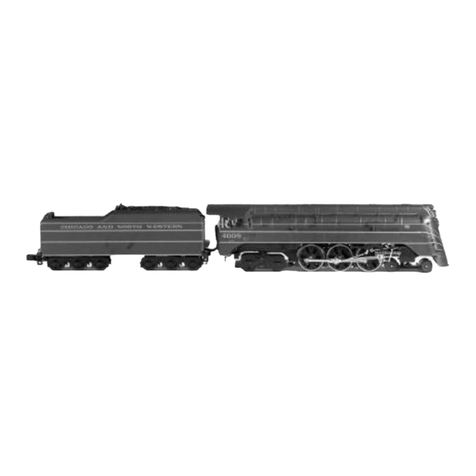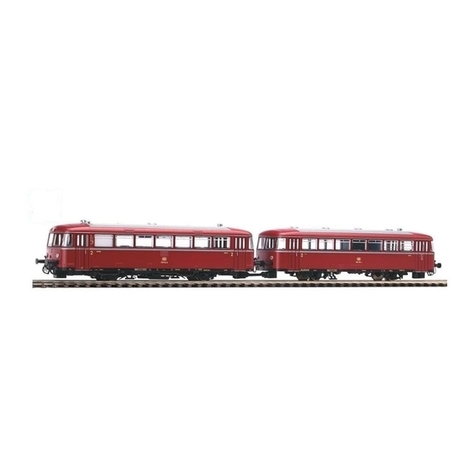GEEBEE SEA 82 User manual

MadeinVietnam.
Kit features.
• Ready-made—minimalassembly&finishingrequired.
• Ready-coveredcovering.
• Photo-illustratedstep-by-stepAssemblyManual.
Specifications
Wingspan--------------------------------------70.9in------------------------------180cm.
Wing area------------------------------------- 863.4 sq.in------------------- 55.7 sq.dm.
Approximate flying weight------------------10.6 lbs------------------------------4.8kg.
Length------------------------------------------46.6in-----------------------------118.3cm.
Recommended engine size-------------- .1.20 cu.in----------------------- 2-stroke.
.1.50cu.in------------------------4-stroke.
Radio System required 4 channels with 6 servos
Flying skill level Intermediate/advanced.
“Graphics and specifications may change without notice”.
MS: SEA 82
ASSEMBLY MANUAL

GEEBEE. Instruction Manual
2
INTRODUCTION.
Thank you for choosing the GEEBEE ARTF by SG MODELS . The GEEBEE was
designed with the intermediate/advanced sport scale in mind. It is a semi scale airplane which is
easy to fly and quick to assemble. The airframe is conventionally built using balsa, plywood to make
it stronger than the average ARTF , yet the design allows the aeroplane to be kept light. You will find
that most of the work has been done for you already. The motor mount has been fitted and the hinges
are pre-installed . Flying the GEEBEE is simply a joy.
This instruction manual is designed to help you build a great flying aeroplane. Please read this
manual thoroughly before starting assembly of your GEEBEE. Use the parts listing below to identify
all parts.
WARNING.
Please be aware that this aeroplane is not a toy and if assembled or used incorrectly it
is capable of causing injury to people or property. WHEN YOU FLY THIS AEROPLANE YOU
ASSUME ALL RISK & RESPONSIBILITY.
If you are inexperienced with basic R/C flight we strongly recommend you contact your R/C
supplier and join your local R/C Model Flying Club. R/C Model Flying Clubs offer a variety of training
procedures designed to help the new pilot on his way to successful R/C flight. They will also be able
to advise on any insurance and safety regulations that may apply.
ADDITIONAL ITEMS REQUIRED.
.1.2 cu.in 2-stroke engine.
.1.5 cu.in 4-stroke engine.
4 channels with 6 servos.
Glow plug to suit engine
Propeller to suit engine
Protective foam rubber for radio
system
Silicone fuel line
TOOLS & SUPPLIES NEEDED.
Thick cyanoacrylate glue
30 minute epoxy
5 minute epoxy
Hand or electric drill
Assorted drill bits
Modelling knife
Straight edge ruler
2mm ball driver
Phillips head screwdriver
220 grit sandpaper
90° square or builder’s triangle
Wire cutters
Masking tape & T-pins
Thread-lock
Paper towels
PARTS LISTING.
FUSELAGE ASSEMBLY
(1) Fuselage
(1) Canopy hatch
WING ASSEMBLY
(1) Right wing half/ aileron
(1) Left wing half with/ aileron
(1) Aluminium dihedral brace
Tail section assembly
(1) Horizontal stabilizer/ elevator
halves.
(1) Rudder halves.
Some more parts.
HARDWARE PACK
COWLING
Landing gear.....

3
1) Carefully remove the aileron from one
of the wing panels. Note the position of the
hinges.
2)Removeeach hingefromthewing panel
and aileron and place a T-pin in the center of
each hinge. Slide each hinge into the wing
panel until the T-pin is snug against the wing
panel. This will help ensure an equal amount
ofhingeis oneithersideof thehingeline when
the aileron is mounted to the aileron.
3) Slide the wing panel on the aileron until
there is only a slight gap. The hinge is now
centered on the wing panel and aileron.
Remove the T-pins and snug the aileron
against the wing panel.A gap of 1/64” or less
shouldbe maintainedbetween thewingpanel
andaileron.
The control surfaces, including the
ailerons, elevators, and rudder, are
prehinged with hinges installed, but the
hinges are not glued in place. It is
imperativethat youproperly adherethe
hingesin placeper thesteps thatfollow
using a high-quality thin C/A glue.
Note:
4)Deflect the aileron and completely
saturate each hinge with thin C/A glue. The
aileronsfrontsurface shouldlightlycontactthe
wing during this procedure. Ideally, when the
hinges are glued in place, a 1/64” gap or less
will be maintained throughout the lengh of the
aileron to the wing panel hinge line.
Note: The hinge is constructed of a special
material that allows the C/A to wick or
penetrateanddistribute throughoutthe
hinge, securely bonding it to the wood
structureof thewing panel andaileron.
To avoid scratching your new aero-
plane we suggest that you cover your work-
benchwith anold towel.Keep acouple of jars
orbowlshandytoholdthesmallpartsafteryou
open the bags.
Pleasetrialfitallparts.Makesureyouhavethe
correct parts and that they fit and are aligned
properlybeforegluing!Thiswillensureproper
assembly as the GEEBEE is made from
natural materials and minor adjustments may
havetobemade. Thepaintandplasticparts
usedinthiskitarefuelproof.However,theyare
not tolerant of many harsh chemicals includ-
ingthefollowing:paintthinner,cyano-acrylate
glueaccelerator,cyanoacrylategluede-bonder
andacetone.Donotletthesechemicalscome
incontactwiththecoloursonthecoveringand
the plastic parts.
NOTE:
HINGING THE AILERONS.
5)Turnthe wingpanel over anddeflect the
aileron in the opposite direction from the
opposite side. Apply thin C/A glue to each
hinge,makingsurethattheC/Apenetratesinto
both the aileron and wing panel.
6) Using C/A remover/debonder and a
papertowel, removeanyexcess C/Aglue that
may have accumulated on the wing or in the
aileronhinge area.
C/Aglue. Hinge.
Hinge.
T- pin.
Hinge.
T- pin.

GEEBEE. Instruction Manual
4
TURNBUCKLE INSTALLATION.
8)Afterbothailerons are securely hinged,
firmly grasp the wing panel and aileron to
make sure the hinges are securely glued and
cannot be pulled out. Do this by carefully
applying medium pressure, trying to separate
the aileron from the wing panel. Use caution
not to crush the wing structure.
7) Repeat this process with the other wing
panel, securely hinging the aileron in place.
HINGING THE RUDDER.
Glue the elevator hinges in place using the
same techniques used to hinge the ailerons.
Glue the rudder hinges in place using the
same techniques used to hinge the ailerons.
Work the aileron up and down several
times to “work in” the hinges and check
for proper movement.
Note:
Aileron control horn: See pictures below.
AILERON CONTROLHORN
Hinge.
2 sets.
3x40mm.
HINGING THE ELEVATOR.
Installingthe turnbuckle forthe wingas same
as pictures below.
Theholelocation ofturnbucklesshownin pic-
ture below .
Washer.
Turnbuckle.
Wing bottom.
3x20mm.
Washer.
Wing bottom.
Locker glue.

5
AluminumWasher.
CONTROL HORN M3
M3LOCKNUT.
Epoxy.
AluminumWasher.
ELEVATOR CONTROL HORN.
M3LOCK
NUT.
ALUMINUMWASHER.
ALUMINUMWASHER.
CONTROLHORN
M3 SCREW.
16mm.
Epoxy.
Wing
Epoxy.
Wing
Install the elevator control horn using the
same method as with the aileron control
horns.
2 sets.
3x35mm.
Rudder control horn:
Using the same techniques used aileron
control horn. See picture below.
Elevator control horn.
16mm.
Epoxy.
RUDDER CONTROL HORN.
1 sets.
3x35mm.
Horizontal
Stabilizer.

GEEBEE. Instruction Manual
6
See pictures below.Make yourself the
template of your engine on paper.
ENGINE MOUNT INSTALLATION.
16mm.
EPOXY.
Rudder control horn.
Hinge.
CONTROL HORN
M3 SCREW.
ALUMINUMWASHER.
ALUMINUMWASHER.
M3LOCK NUT.
EPOXY.
Fuselage.Rudder.
3x15mm.
M3x15mm.

5.5mm.
4x30mm.
2) Usinga modelingknife, cutone length
ofsilicon fuelline. Connectone endof the line
tothe weightedfuel pickup and theother end
to the nylon pick up tube.(The silicon tube is
not included).
3) Carefully bend the second nylon tube
up at a 45º angle. This tube is the vent tube.
1) Using a modeling knife, carefully cut
off the rear portion of one of the 3 nylon tubes
leaving 1/2” protruding from the rear of the
stopper. This will be the fuel pick up tube.
INSTALLING THE STOPPERASSEMBLY.
Thread locker glue.
Mark and drill 4 holes for engine mount.
Insert 4 blind nuts to firewall.
3x15mm.
7
Please choose one of the positions below
to suit your motor, then you drill with a 2mm
diameter drill then and next you drill again
with a 5.5mm drill to install the Blind Belt /
Belt BILLION
.

8
Vent tube. Fuel pick up tube.
Fuel fill tube.
4) Test fit the stopper assembly into the
tank. It may be necessary to remove some of
the flashing around the tank opening using a
modeling knife. If flashing is present, make
sure none falls into the tank.
5) With the stopper assembly in place,
the weighted pick-up should rest away from
therear of thetank and movefreely inside the
tank. The top of the vent tube should rest just
below the top of the tank. It should not touch
the top of the tank.
Important: When the stopper assembly is in-
stalled in the tank, the top of the vent tube
should rest just below the top surface of the
tank. It should not touch the top of the tank.
Carefully use a lighter or heat gun to
permenently set the angle of the vent tube.
6) When satisfied with the alignment of
the stopper assembly tighten the 3 x 20mm
machine screw until the rubber stopper ex-
pands and seals the tank opening. Do not
overtighten the assembly as this could cause
the tank to split.
FUEL TANK INSTALLATION.
You should mark which tube is the vent
and which is the fuel pickup when you
attach fuel tubing to the tubes in the stopper.
Once the tank is installed inside the fuselage,
it may be difficult to determine which is which.
Fuel pick-up tube.
Fuelfill tube.
Venttube.
Tie Wrap.
Fueltank.
Balsawood.
GEEBEE. Instruction Manual
1) Install the pushrod housing through the
predrilledholein thefirewalland intotheservo
compartment. The pushrod housing should
protrude 1/4" out past the front of the firewall.
Makea Z-Bend1/4"from oneend of theplain
wire pushrod.
MOUNTING THE ENGINE.
Blow through one of the lines to ensure
thefuel lines havenot become kinkedin-
side the fuel tank compartment. Air should
flowthrough easily.

6) Attachthe Z-Bendin thepushrodwire to
the throttle arm on the carburetor.
5) Bolttheenginetothe engine mount using
the four machine screws. Double check that
all the screws are tight before proceeding.
155mm
.
4.2 mm
diameter.
MachineScrew 4x30mm.
Pushrodwire.
INSTALLING THE BATTERY.
Battery.
Tie Wrap.
4) Remove the engine. Using an drill bit,
drill the mounting holes through the engine
mount at the four locations marked.
2) Place your engine onto the engine
mount. Adjust the engine is centered of the
edges of the engine case.
3) When you are satisfied with the align-
ment, mark the locations of the engine
mounting.
Epoxy.
Battery tray.
9
COWLING INSTALLATION.
1) Slide the fiberglass cowl over the en-
gineand line uptheback edgeofthe cowlwith
themarks youmade onthe fuselagethen trim
and cut.
Dummy
Engine.

10
2) While keeping the back edge of the
cowl flush with the marks, align the front of
thecowlwiththe crankshaft oftheengine. The
front of the cowl should be positioned so the
crankshaft is in nearly the middle of the cowl
opening.Usethespinnerbackplateasaguide.
Hold the cowl firmly in place using pieces of
masking tape.
3) Installthemufflerandmufflerextension
onto the engine and make the cut out in the
cowl for muffler clearance. Connect the fuel
and pressure lines to the carburetor, muffler
and fuel filler valve. Secure the cowl to fuse-
lage using the 3x10mm screws (4).
Becauseof thesizeof thecowl, itmay be nec-
essaryto usea needlevalve extensionfor the
highspeed needle valve. Makethis outofsuf-
ficient length 1.5mm wire and install it into the
end of the needle valve. Secure the wire in
placeby tighteningthe setscrew inthe sideof
the needle valve.
Trim and cut.
Trim and cut.
Dummy
Engine.
Silicon
glue.
Cowling.
Dummy
Engine.
MachineScrew 3x10mm.
Instruction Manual
GEEBEE.

ELECTRIC POWER CONVERSION.
Locate the items neccessary to install
the electric power conversion included
with your model.
Attach the electric motor box to the
rewall centered with the cross lines
drawn on the electric motor box and re
-
wall. Using M4x25mm to secure the mo
-
tor box to the rewall. Please see pictures
below.
- Motor: 1100 - 2000 Watts
- Propeller: 17x8 ~ 19x10
- ESC: 85A
- 8S- 10S Lipo
M4x25mm and washers.
11
Please drill into the crosshair to connect
the motor box to the F1 base.
M3x15mm.
5.5mm.

en, use 5.5mm drill bit to enlarge the
holes on the electric motor box.
Attach the motor to the front of the
electric motor box using four 4mm blind
nut, four M4x20mm hex head bolts to se-
cure the motor. Please see picture shown.
5.5mm.
Blind nut.
M4x20mm.
155mm.
GEEBEE. Instruction Manual
12
Attach the motor mount to the front of
theelectricmotorboxusingfour4mmblind
nut, four M4x20mm hex head bolts to se-
cure the motor. Please see picture shown.
4mm.

INSTALLING THE SPINNER.
Battery.
e propeller should not touch any
part of the spinner cone. If it does, use a
sharp modeling knife and carefully trim
away the spinner cone where the propel-
ler comes in contact with it.
13
Speed control.
Attach the speed control to the side of
the motor box using two-sided tape and
tie wraps. Connect the appropriate leads
from the speed control to the motor. Make
sure the leads will not interfere with the
operation of the motor.
Epoxy.
Balsa stick.

GEEBEE. Instruction Manual
14
INSTALLING THE SWITCH.
Installthe switchintothe precuthole inthe
side of fuselage.
THROTTLE SERVO ARM INSTALLATION.
Install adjustableservoconnectorinthe servo
arm .
2) Secure the servos with the screws pro-
vided with your radio system.
INSTALLING THE FUSELAGE SERVO.
1) Installthe rubbergrommets andbrass
colletsonto thethrottleservo. Test fit theservo
into the aileron servo mount.
AdjustableServo
connector.
Servoarm.
Loctite secure.
1 pcs.
Because the size of servos differ, you
mayneedtoadjust thesizeoftheprecut open-
ing in the mount. The notch in the sides of the
mount allow the servo lead to pass through.
Throttleservo. Elevatorservo.
Elevatorservo.
Rudderservo.
Switch.
Elevatorservoarm.
Throttleservoarm.
Elevatorservoarm.
Rudderservoarm.
INSTALLING THE AILERON SERVOS.
Servos. Smallweight.
Thread.

15
Attach the string to the servo lead and carefully thread it though the wing.
String.
Small Weight.
Wing. Wing rib.
String.
Small Weight.
AILERONPUSHROD HORN INSTALLATION.
Wing.
Aileron.
M2 lock nut.
M2clevis.
75mm.
110mm.
Installing the aileron servo in place using the
same techniques used to flap servo.
String.
Small weight.

GEEBEE. Instruction Manual
16
Repeat the procedure for the other wing.
Wing. Aileron.
M2lock nut.
WING ASSEMBLY.
NOTE: We highly recommend using 30
minute epoxy as it is stronger and provides
more working time, allowing the builder to
properlyaligntheparts.Usingfastcureepoxy
whenjoiningthewinghalvescouldresultinthe
gluedryingbeforethewinghalvesarealigned
properlywhichmayresultinfailureofthewing
centre section during flight.
1)Testfitthewingtubeintoeachwinghalf.
The brace should slide in easily up to the
centreline that you drew. If not, use 220 grit
sandpaper with a sanding block and sand
down the edges and ends of the brace until it
fits properly.
Maskingtape.
Epoxy.
Aileron.
Wing.
Wing.Aileron.
Carefully slide the two wing halves together
and firmly press them together, allowing the
excess epoxy to run out. There should not be
any gap in the wing halves. Use rubbing
alcohol and a paper tower to clean up any
excess epoxy.
Apply masking tape at the wing join to hold
the wing halves together securely.
2) Removethebracewhensatisfiedwithits
fit ineach wing half. Coat the dihedral brace
with30 minuteepoxy. Next, pour some epoxy
into the dihedral box in one wing panel. Make
sure you cover the top and bottom as well as
the sides of the dihedral brace.Use enough
epoxy to fill any gaps.
Epoxy.
Epoxy.

17
Epoxy.
3) Peel off the backing from the self adhe-
sivecoveringstrip.Applythestriptothecentre
section of the wing starting from the bottom
trailingedge.Wrapthestripallthewayaround
the wing until it meets the trailing edge again.
Trim off any excess strip.
Removethecovering.
Remove covering.
Pen.
When cutting through the covering to
remove it, cut with only enough pressure
toonly cut through thecoveringitself. Cut-
ting into the balsa structure may weaken
it.
Maskingtape.
INSTALLINGTHE HORIZONTALSTABILIZER.
Hingeslot.
Center line.

GEEBEE. Instruction Manual
18
90º
Vertical
Stabilizer.
Horizontal
Stabilizer.
Putthe verticalstabilizer intothe in thetop
of the horizontal fin. The bottom edge of the
stabilizershould alsobefirmly pushedagainst
the top of the horizontal stabilizer.
Remove covering.
Fill epoxy.
Hinge.
INSTALLINGTHE VERTICAL STABILIZER.
Epoxy.
Hinge.
C/Aglue.

19
INSTALLING THE MAIN GEAR WIRES.
Wing botom.
Remove the covering.
Springlanding gear.
1
1

GEEBEE. Instruction Manual
20
1) Using a modeling knife, remove the
covering from over the two main gear mount-
ing slots located in the bottom of the wing.
2) Insert the 90º bend of one main gear
wire into the predrilled hole in one mounting
slot.
3)Using thetwolanding gearstrapsas a
guide,mark thelocationsof thefour 3x15mm
mounting screws onto the wing surface.
Installthe landing gear.
Wingbotom.
M3x15mm.
Turnbuckle.
Epoxy.
Screw
M3x30mm.
Install wooden tray to right position.
Trim and cut
Table of contents
Other GEEBEE Toy manuals
Popular Toy manuals by other brands

Audi
Audi Kids Car operating instructions

Hasbro
Hasbro Deluxe Electronic Buzz Lightyear 03934 instruction manual
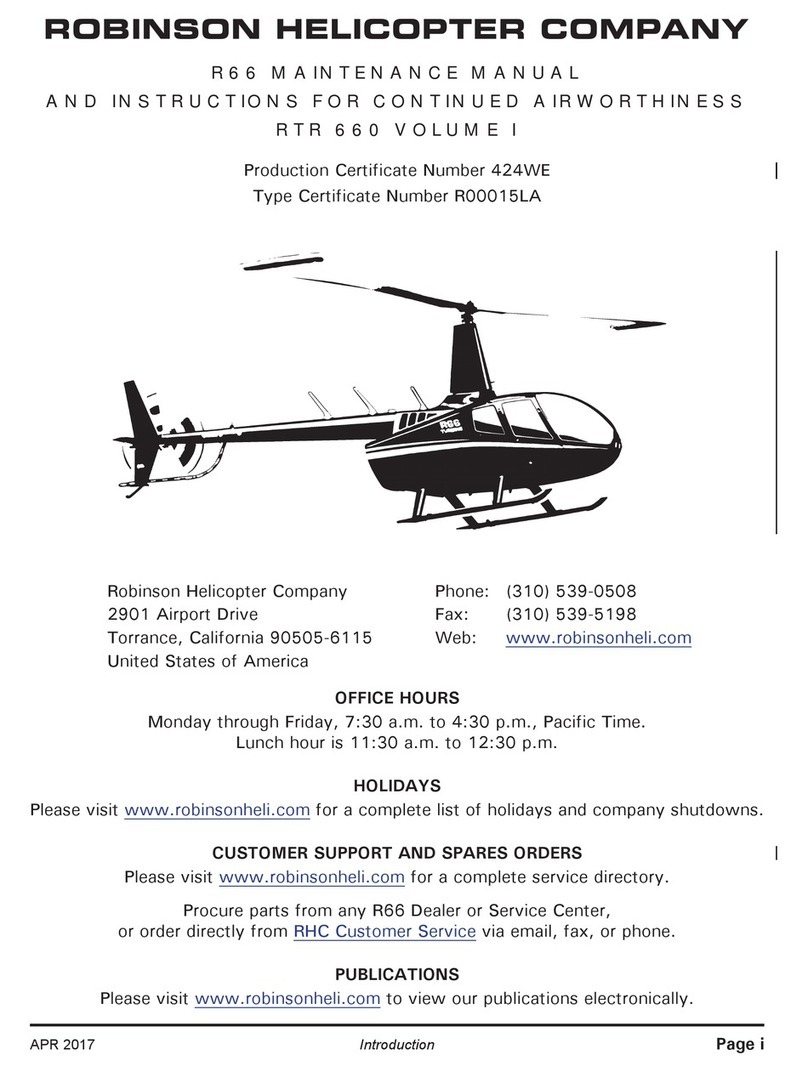
Robinson
Robinson R-66 Series Lithium-Ion Maintenance manual

Fisher-Price
Fisher-Price 73946 instructions
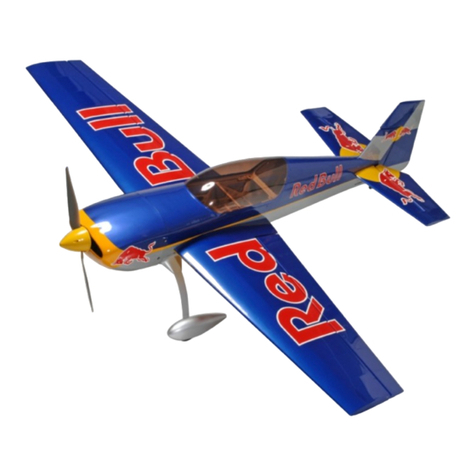
Hobbico
Hobbico Flitework Extra 300LP FLWA4003 Building and instruction manual

Eduard
Eduard Mig-27 Flogger D exterior quick start guide

